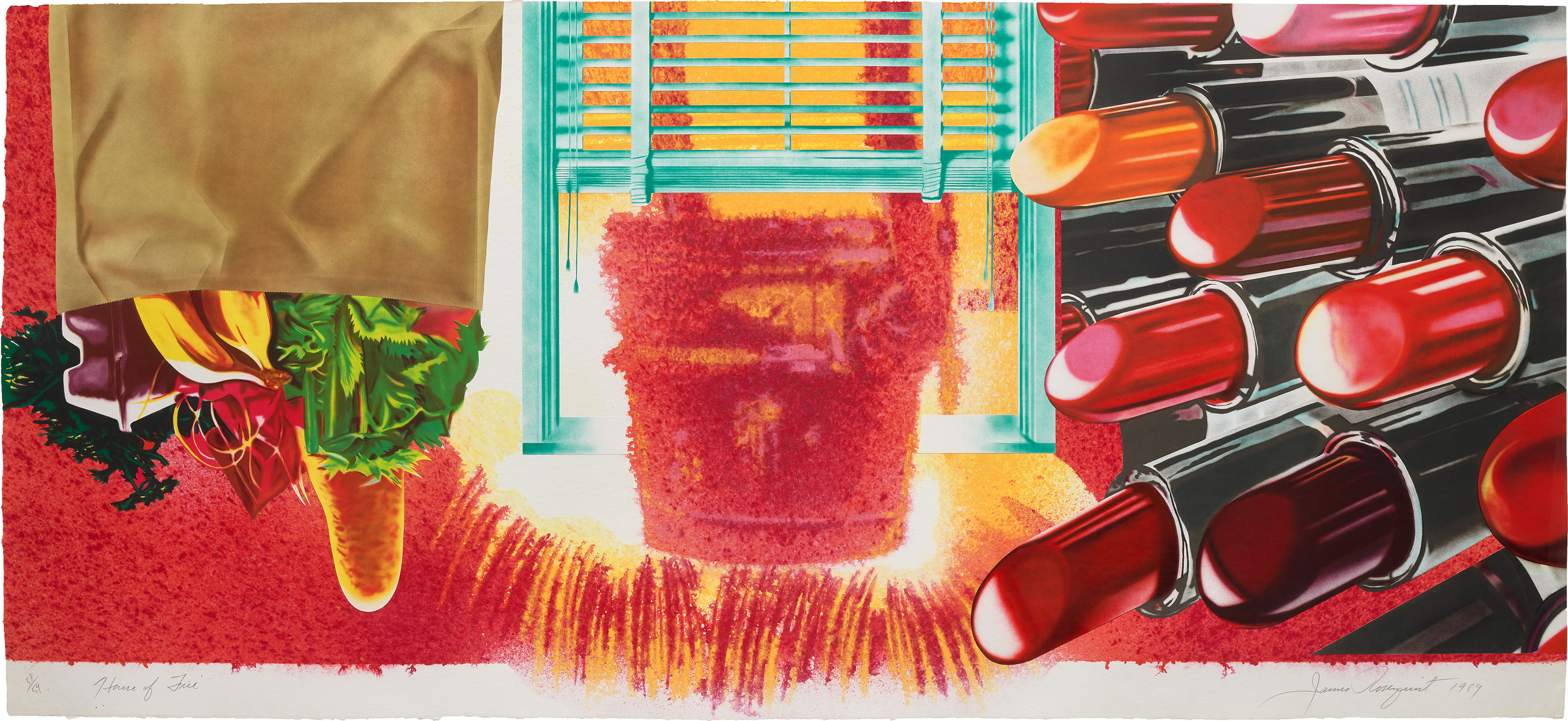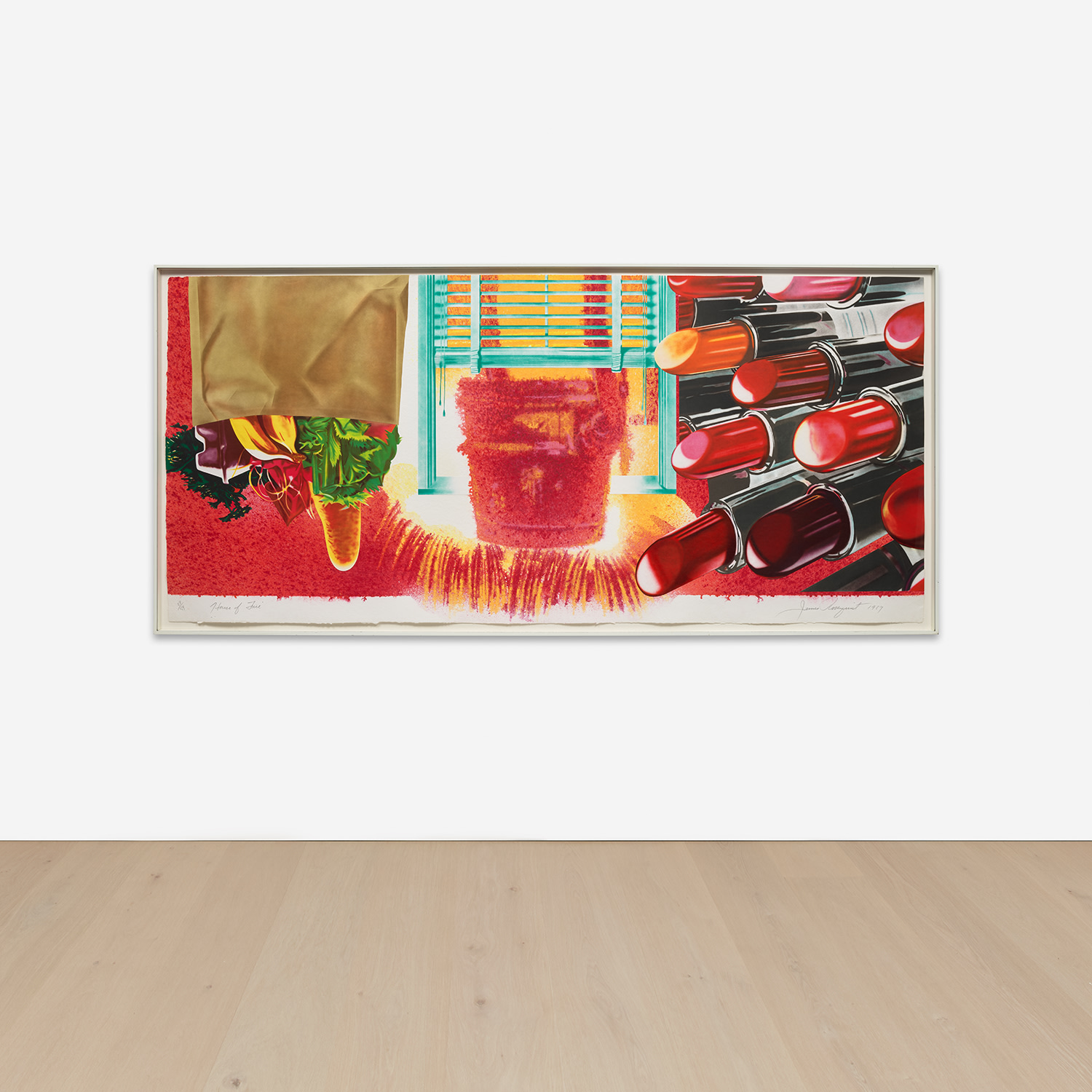



243
James Rosenquist
House of Fire (G. 223)
1989
Monumental pressed paper pulp print in colors, on TGL handmade paper, with lithographic collage, on Rives BFK paper, the full sheet.
S. 54 1/2 x 119 1/2 in. (138.4 x 303.5 cm)
Signed, titled, dated and numbered 38/54 in pencil (there were also 12 artist's proofs), published by Tyler Graphics Ltd., Mount Kisco, New York, framed.